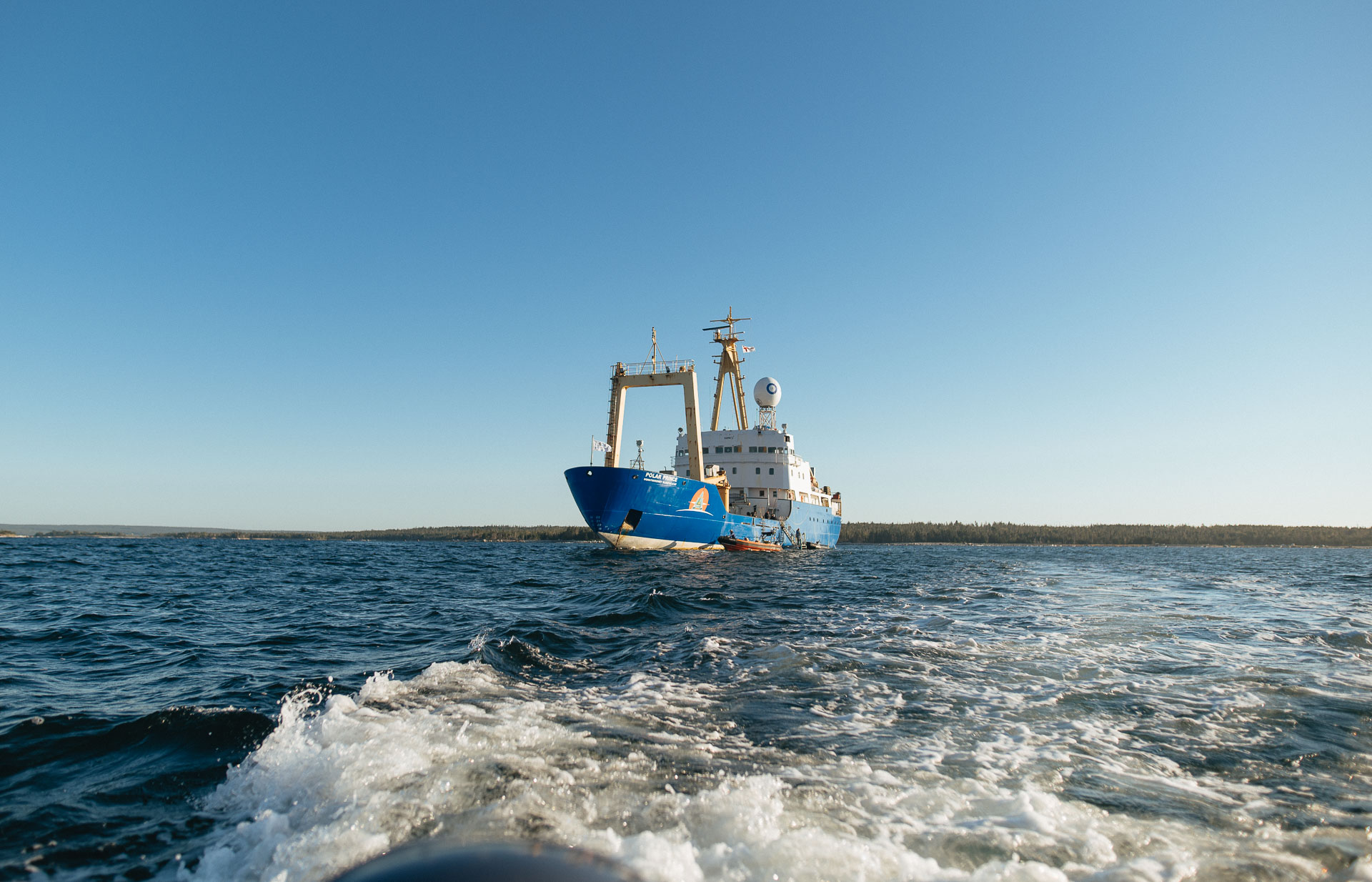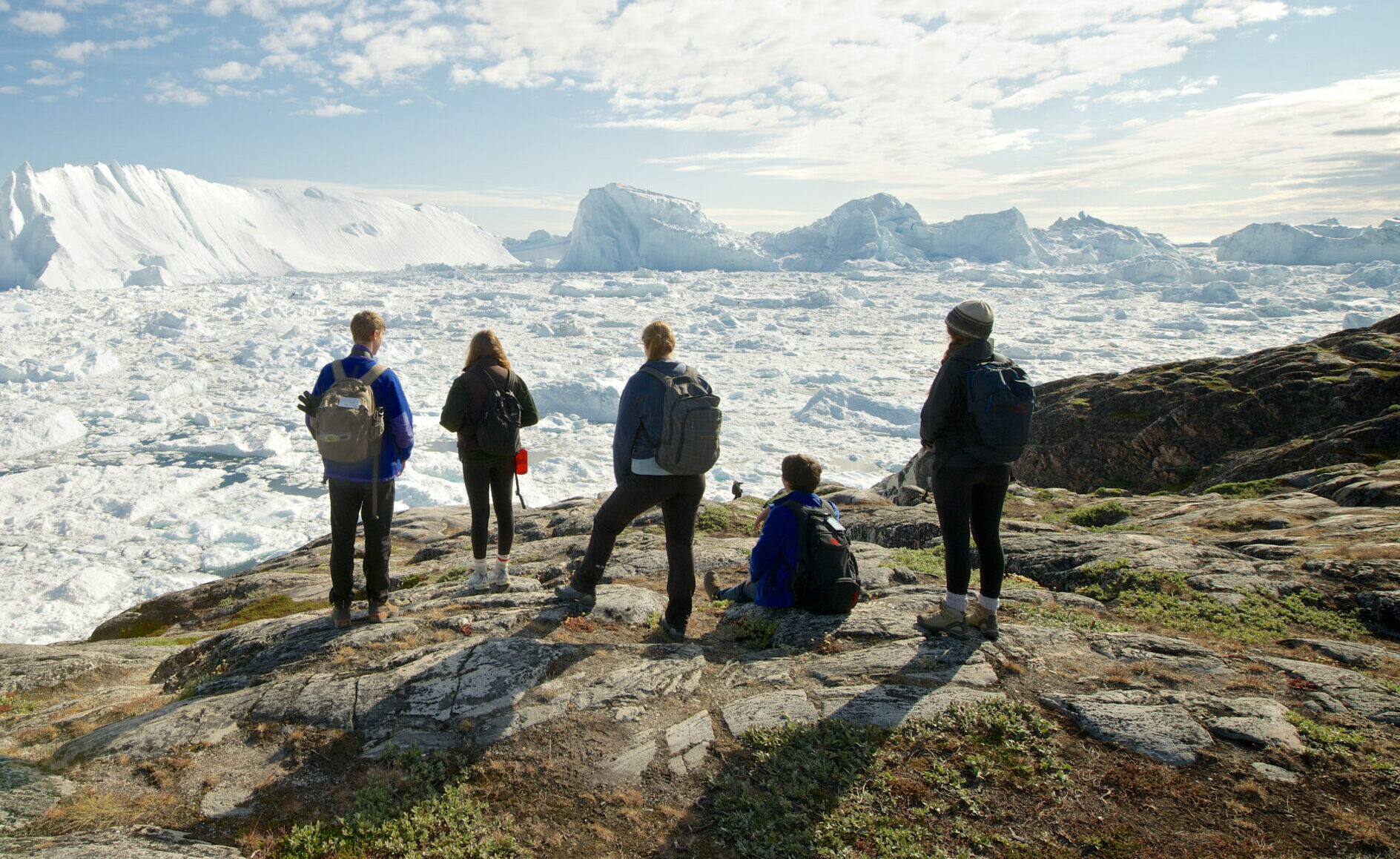Blue Futures Pathways Expedition: Update Two
Anyone who has spent time at sea in the Arctic or North Atlantic can confidently tell you that even the best-laid plans will change. Being able to roll with the proverbial punches that often come in the form of waves, wind, and ice is crucial. Students On Ice knows this well, so well that “flexibility is key” can be found emblazoned on the nape of our t-shirts. It’s also a lesson we wasted no time learning on our expedition.
As the sun rose on the second ship day, so too did a strong westerly wind that prevented any shore landings on Killiniq Island. Rather than exploring the only place where Nunavut, Nunavik, and Nunatsiavut border each other, we spent the day venturing inward, learning more about storytelling, remotely operated vehicle construction, plants, and eDNA.

Each of these workshops came with challenges, but the ROV assembly was a true dive into the deep end. Strewn across the hangar floor were all the pieces of an ROV, save for instructions. After many hours and even more sighs of frustration later, the youth transformed the parts into working vehicles.
“I’ve never done anything like that before. So for me when it was finished, and everything worked, and the motors turned, and they all turned in the right direction…it was like, whoa, I just did that.”
– Rebekka Sanguin, Rankin Inlet, Nunavut

The wind, which didn’t concede on the third day and again left us ship-bound, became part of a workshop on navigation. The question we had to answer was where would be a good place to drop our anchor that night. Without any communication between groups, we all settled on an area close to Big White Bearskin Island. The position was so ideal that the captain, who had previously selected a different location, changed his mind and dropped anchor less than a mile from our site.
“All together in this room and on this ship, we have the collective intelligence to arrive at the same conclusion as people that are years and years more experienced than us at the thing that we’re doing. I think that was so cool.”
– Genevieve Gay, SOI Educator, Whitehorse, Yukon.

On day four the winds subsided enough for us to enter nearby Nachvak Fjord. Just as our divers entered the fjord’s blue waters, the rest of us went to the mouth of the Nachvak River armed with rods and lures. Hours later, dozens of Arctic char lay in bags, coolers, and on the shoreline, waiting to be shared on the ship and with the communities we’d find ourselves visiting in a few days time.

As the Polar Prince made its way past the last of the fjord walls, now silhouetted by shades of pink and purple, a call came out over the staff radios, “Seal on the port side,” a few moments passed, “No. Correction. It’s a polar bear!” A group rushed over just in time to see a bobbing head staring back in bewilderment before disappearing into the dark, rolling wake altogether.





